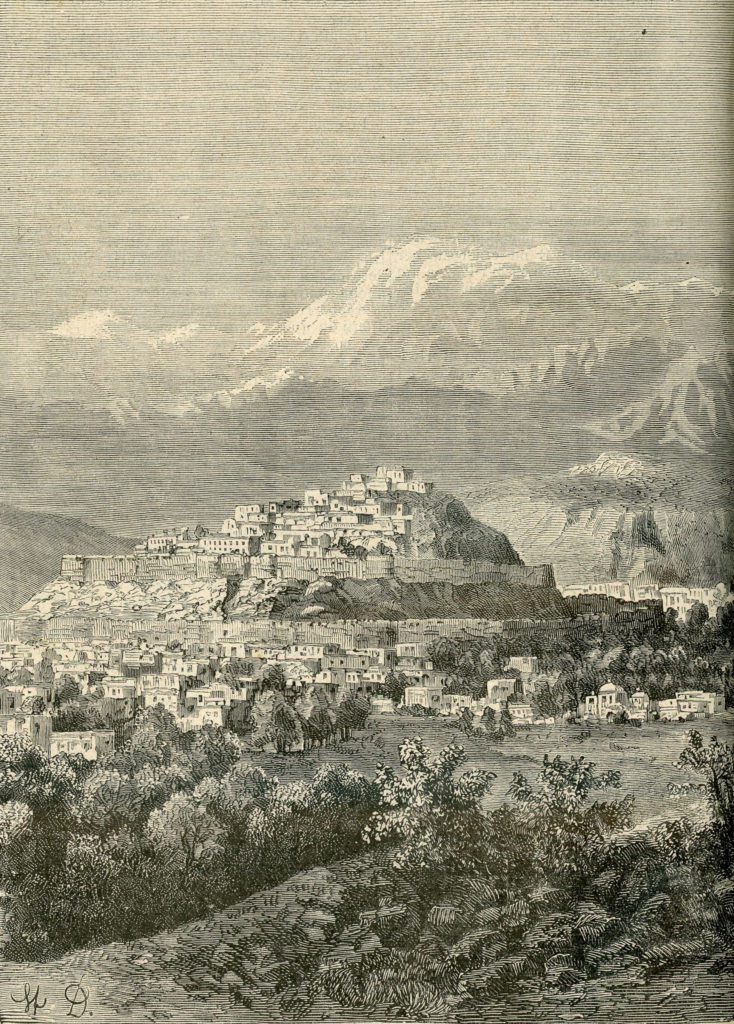
Above is an image of Kabul city in Afghanistan etched in the 1880s by an Italian artist. Amongst other things it shows the Himalayan backdrop and the ancient walled city. Afghanistan is a remarkable country with a history of little more than hostility over the last two centuries with countries wishing to control power therein; the villains of the peace chronologically being Britain, Russia and the U.S.A, all three discovering a fierce (literally) independence among the national population.
The Two Afghan Wars both happened during Victoria’s reign and are viewed in the context of colonial wars although Afghanistan was never fully part of the British Empire. They were both fought at great cost to the soldiers of the professional army and with the aim of securing in power in Afghanistan a ruler friendly to Britain; more especially friendly towards neighbouring India, the ‘Jewel in the Crown’ of the British Empire and over which Victoria ruled as ‘Empress’ by the late 1870s. The problem for the British governors in the sub-Continent was that Russia, ruled by a succession of Tsars, also sought to have special influence within Afghanistan. So the Himalayan mountain range formed the zone of conflict, more especially, the high level passes through the range of fold mountains.
Britain’s two Afghan Wars flared-up between 1839 and 1842 and later 1878 to 1880. With reporting of war having been raised to a whole new level during the Crimean War, 1854 to 1856, also against Russia and resulting in frightful losses for the British army, the Second Afghan War was similarly well reported in British newspapers. With East Park, Hull being developed in the 1880s memories of this Second Afghan War were fresh in the memories of the literate population.
(to be continued)